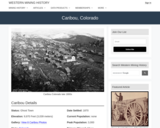Step 1. Students are asked to keep track of their energy use from a variety of sources (heating/cooling, electricity, transportation, secondary emissions, etc) during the 9 days of Thanksgiving break, when many of them are likely to travel. They use the total for the 9 days that they calculated using an online calculator to estimate their yearly footprint and compare it to US and world averages. For most of them, the amount of carbon emitted during those 9 days is quite large because of airplane travel or long-distance driving. However, using a week of break when many students will travel allows them to become aware of the significance of transportation in carbon emissions. We provided a table with electricity and heating/cooling bills for various residence halls for students who stay on campus during the break.
Step 2. Students complete an online survey where they are asked to enter the values that they have obtained for the various components of the calculator, perform some simple calculations and compare their annual footprint to the U.S. average. We used SurveyGizmo for the survey because it allows to download the data in a spreadsheet format and has some limited plotting features. The free version allows a maximum of 250 submissions, the Basic version ($19 per month, can be canceled at any time) has unlimited submissions.
Step 3. Students write an essay through BlackBoard/WebCT (Assignment). A few guiding questions are provided for this essay where students reflect on the results of their impact on the global carbon budget, what they found surprising, and if they plan to make any changes to their lifestyle to limit their impact. No length limit is set for the essay.
The guidelines and components of this assignment are available on a wiki page. The three steps can be implemented in BlackBoard/WebCT as a Lesson Plan with links to the online calculator (step 1), to the survey (step 2), and to the Assignment/essay (step 3).
(Note: this resource was added to OER Commons as part of a batch upload of over 2,200 records. If you notice an issue with the quality of the metadata, please let us know by using the 'report' button and we will flag it for consideration.)


